
In the intricate world of arachnids, non-venomous spiders often compensate for their lack of venom with extraordinary architectural skills. These eight-legged engineers create some of nature’s most spectacular structures without the advantage of toxic weaponry. From geometric marvels to innovative hunting traps, these web designs showcase evolution’s remarkable solutions to survival challenges. Each silk masterpiece serves specific purposes—capturing prey, protecting offspring, or creating shelter—while demonstrating incredible structural engineering principles. Let’s explore the fascinating diversity of web structures created by spiders that rely on ingenuity rather than venom to thrive in their ecological niches.
The Classic Orb Web: Engineering Perfection
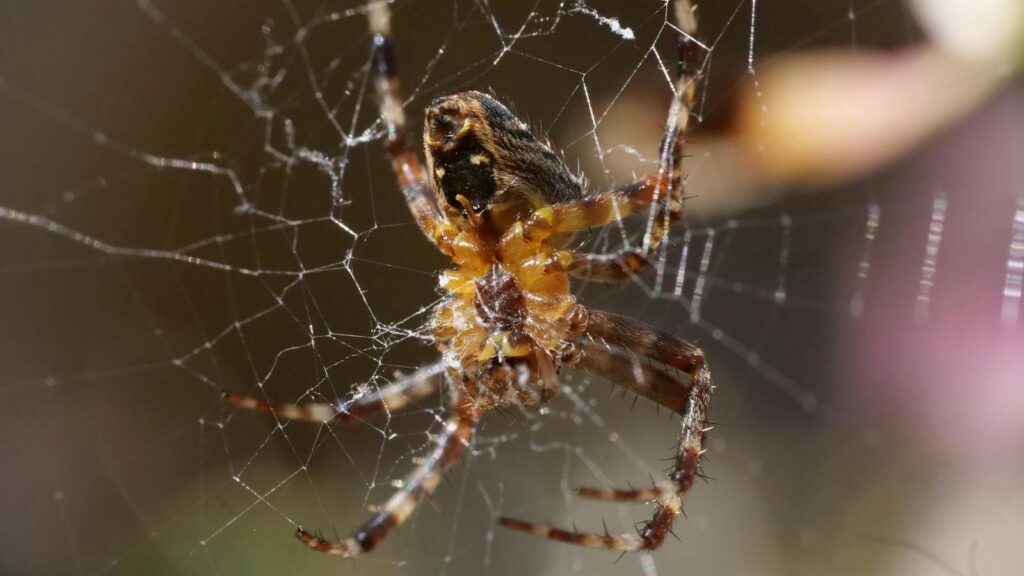
Among non-venomous spiders, orb-weavers like those in the Araneidae family create perhaps the most recognizable web structures in the natural world. These circular webs feature concentric rings connected by radial threads, creating a geometric pattern that efficiently catches flying insects. The construction process is remarkably methodical—beginning with a non-sticky bridge line, followed by radial threads emanating from the center, and finished with a spiral of sticky silk that forms the capture zone. What makes these structures particularly impressive is the spider’s ability to adjust thread tension and spacing based on environmental conditions such as wind exposure and prey availability. The orb web represents an evolutionary masterpiece of materials science, using minimal resources to create maximum catching surface while maintaining structural integrity even in challenging weather.
Tangle Webs: Chaotic by Design
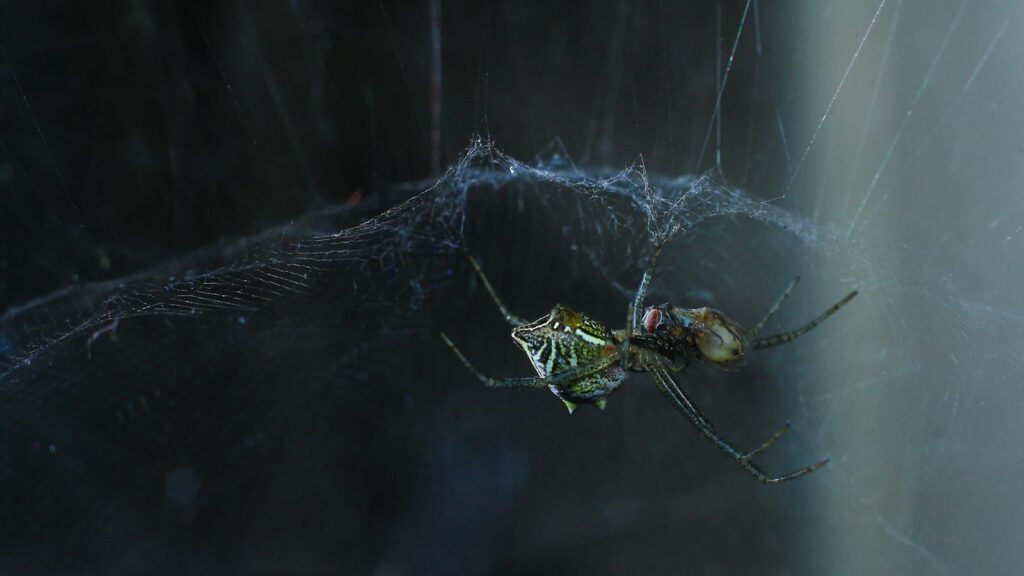
The apparent disorder of tangle webs, created by members of the Theridiidae family (including common house spiders), actually represents a sophisticated hunting strategy. Unlike the organized geometry of orb webs, these three-dimensional structures consist of irregularly arranged sticky and non-sticky silk strands that extend in seemingly random directions throughout the spider’s territory. The chaotic arrangement serves a critical purpose—when insects encounter these strands, they become disoriented in the maze-like structure, increasing their chances of contacting the sticky capture threads. Most remarkable is the tangle web’s adaptability to different environments, with spiders modifying the density and arrangement based on available anchor points in human dwellings or natural settings. Some species incorporate “trip lines” that extend to the ground, alerting the spider when ground-dwelling prey has become entangled below.
Sheet Webs: Horizontal Hunting Platforms

Sheet web weavers (Linyphiidae family) construct some of the most distinctive and effective hunting structures among non-venomous spiders. These webs consist of a dense, horizontal sheet of non-sticky silk, often with a dome-like shape, suspended between vegetation or other anchor points. Above this sheet, the spider constructs a complex network of barrier threads that extend upward, serving to knock flying insects onto the sheet below where the spider waits. The genius of this design lies in its multi-layered functionality—the barrier threads intercept prey, the sheet acts as both landing zone and hunting platform, and the spider can remain safely hidden beneath until prey arrives. In particularly elaborate versions, some sheet-web builders create funnel-shaped retreats within or beneath the sheet where they can quickly hide from predators while remaining connected to their hunting platform through vibration-sensitive threads.
Funnel Webs: Architectural Retreats
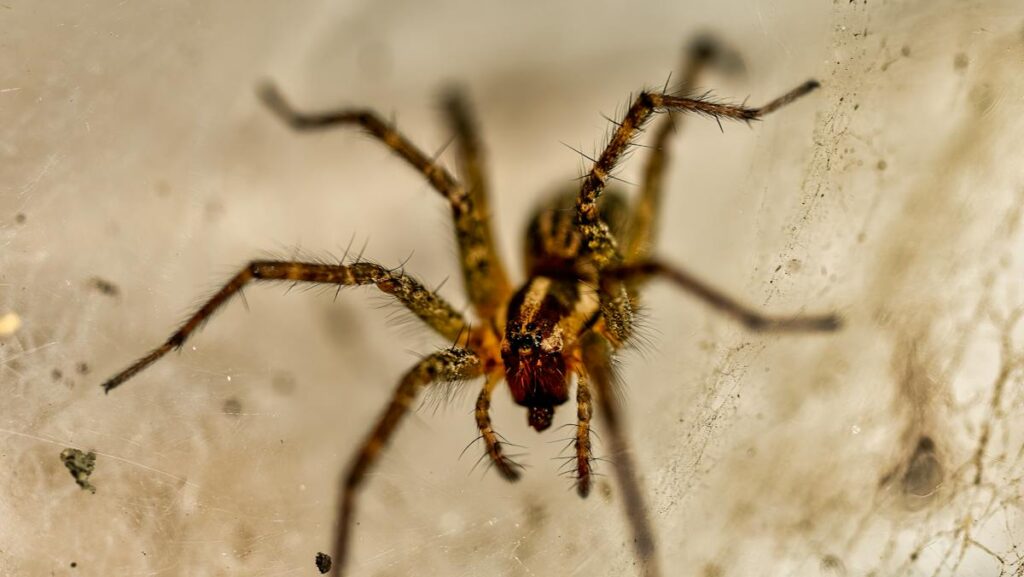
Non-venomous funnel weavers (Agelenidae family) should not be confused with the venomous Australian funnel-web spiders, as they create entirely different structures with unique architectural features. These webs consist of a flat, densely woven sheet that narrows into a tubular retreat where the spider hides. The sheet portion spreads outward like a fan, often covering surprising amounts of territory in garden corners or between plants. What makes these structures remarkable is their dual functionality—serving as both extensive capture surface and secure living quarters. The spider feels vibrations through the sheet and rushes out with impressive speed to capture prey that has landed or walked on the surface. Perhaps most fascinating is how these spiders maintain and expand their webs over time, adding new sections and repairing damaged areas rather than rebuilding entirely, creating structures that can last for months when protected from the elements.
Triangle Webs: Minimalist Innovation
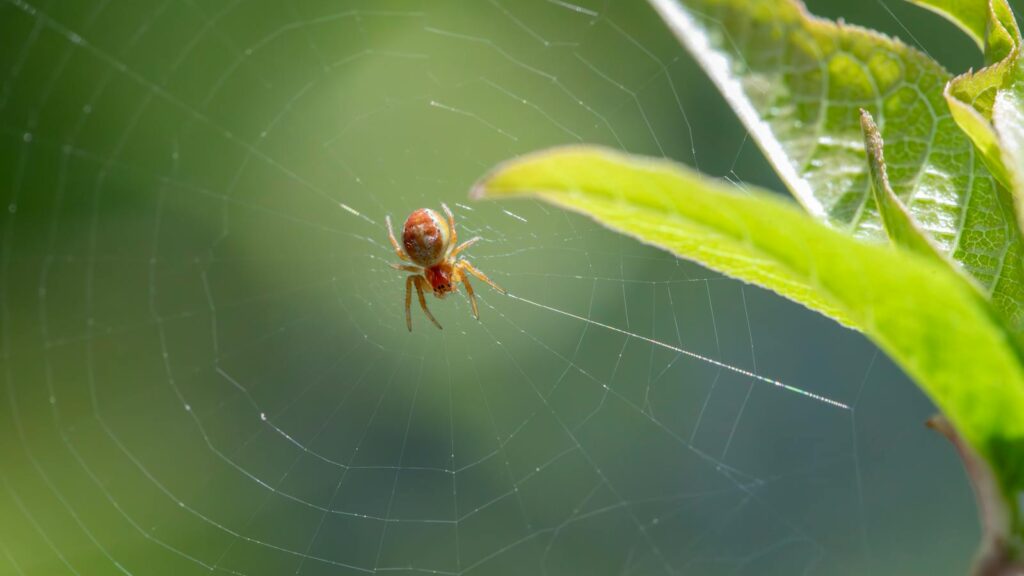
The triangle web, created by spiders in the Uloboridae family (hackled orb-weavers), represents one of the most unusual modifications of the traditional orb web design. As their name suggests, these non-venomous spiders construct triangular webs that use significantly less silk than conventional orb webs while maintaining remarkable catching efficiency. The most distinctive feature is the reduced number of radial threads, creating a structure with just a few supporting lines that form a triangle rather than a complete circle. These spiders compensate for their lack of venom with specialized “hackled” silk that has a woolly texture created by cribellate organs, making it extremely effective at entangling prey without chemical adhesives. When prey is captured, the spider’s hunting strategy is equally unusual—rather than delivering a venomous bite, it meticulously wraps its prey in silk and crushes it with powerful chelicerae before consuming it.
Ladder Webs: Vertical Hunting Strips
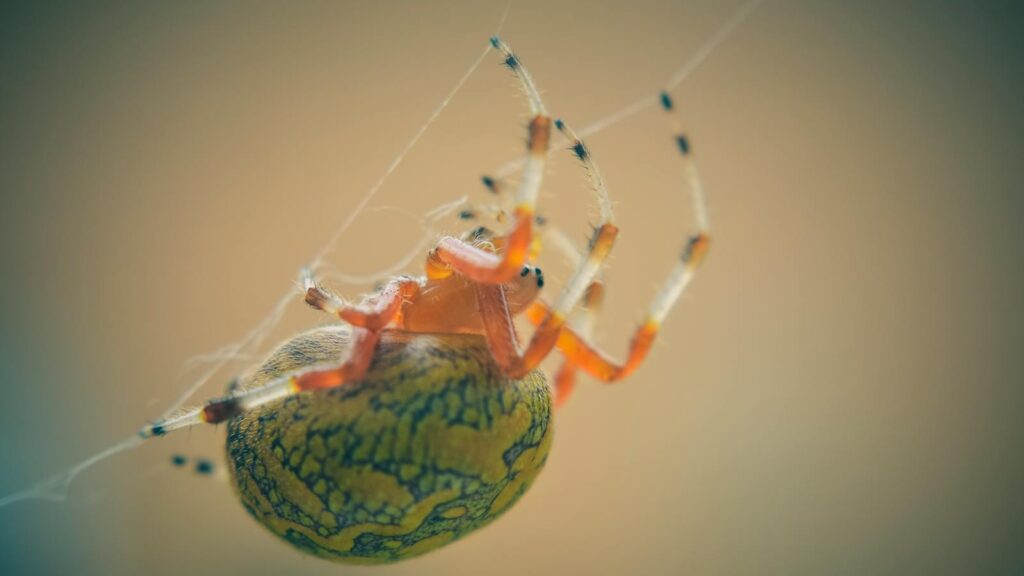
The ladder web represents a fascinating evolutionary adaptation found among some non-venomous members of the Araneidae family, particularly in the genus Scoloderus. Unlike conventional orb webs that spread outward in all directions, ladder webs feature an elongated vertical structure resembling a ladder or ribbon that hangs between branches or vegetation. The primary catching area consists of a densely woven rectangular strip with supporting horizontal threads that create the “rungs” of the ladder. This specialized design appears particularly effective at capturing specific types of prey, especially moths and other insects that tend to fly in predictable vertical paths between plants. The spider typically positions itself at either the top or bottom of the ladder, waiting to detect vibrations from insects that collide with the nearly invisible structure during flight. Some ladder web builders enhance the effectiveness of their traps by positioning them along natural insect flight corridors, such as gaps between bushes or along forest edges.
Bowl and Doily Webs: Complex Multi-Layer Systems
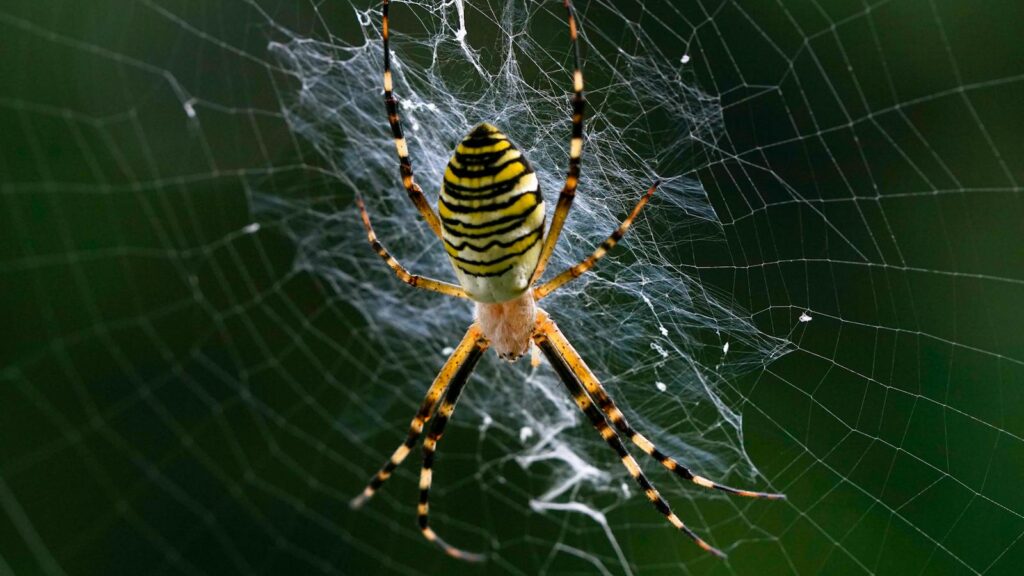
The bowl and doily web, created by spiders in the Linyphiidae family (particularly the genus Frontinella), represents one of the most elaborate non-venomous spider web designs in nature. These remarkable structures consist of three distinct components working together: an inverted bowl-shaped sheet on top, a flat horizontal sheet below (the “doily”), and a network of tangled threads above the bowl. This three-dimensional architecture creates a sophisticated prey-capture system where flying insects hit the upper tangle threads and fall onto the bowl, then either roll into the doily or are grabbed by the spider hanging upside-down beneath the bowl. The structural engineering is particularly impressive because the spider must create multiple silk sheets with different tensions and orientations, all while maintaining the correct spacing between layers. Research has shown that this complex design may be especially effective at capturing small flying insects like midges and mosquitoes that might escape from simpler web structures.
Bolas Webs: The Aerial Fishing Line
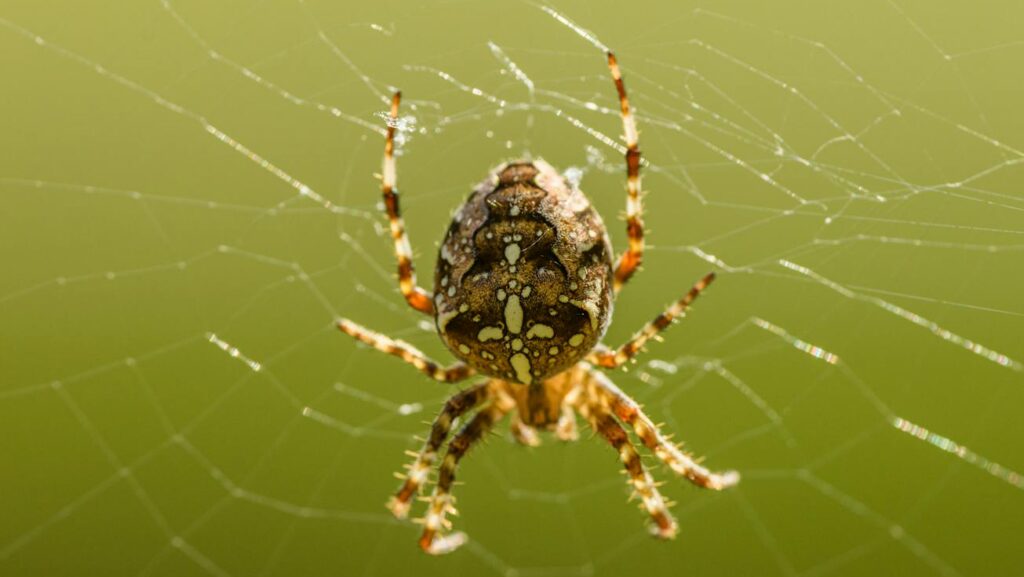
Perhaps the most specialized hunting technique among non-venomous spiders belongs to the bolas spiders (genus Mastophora), which have abandoned traditional web-building entirely in favor of a remarkable “fishing” method. Instead of constructing a stationary web, these ingenious hunters create a single strand of silk with a sticky globule at the end—essentially a ball on a string. The spider then produces chemical compounds that mimic the sex pheromones of certain moth species, effectively luring male moths close enough to swing its bolas and strike them with the adhesive globule. Once captured, the moth is reeled in like a fish on a line and quickly wrapped in silk. This highly specialized hunting strategy demonstrates extraordinary evolutionary adaptation, as each bolas spider species typically produces pheromones that attract only specific moth species, creating a highly targeted hunting system. The precision of this method allows bolas spiders to capture prey while using minimal silk resources and remaining nearly motionless, reducing their visibility to predators.
Communal Webs: Social Spider Megastructures
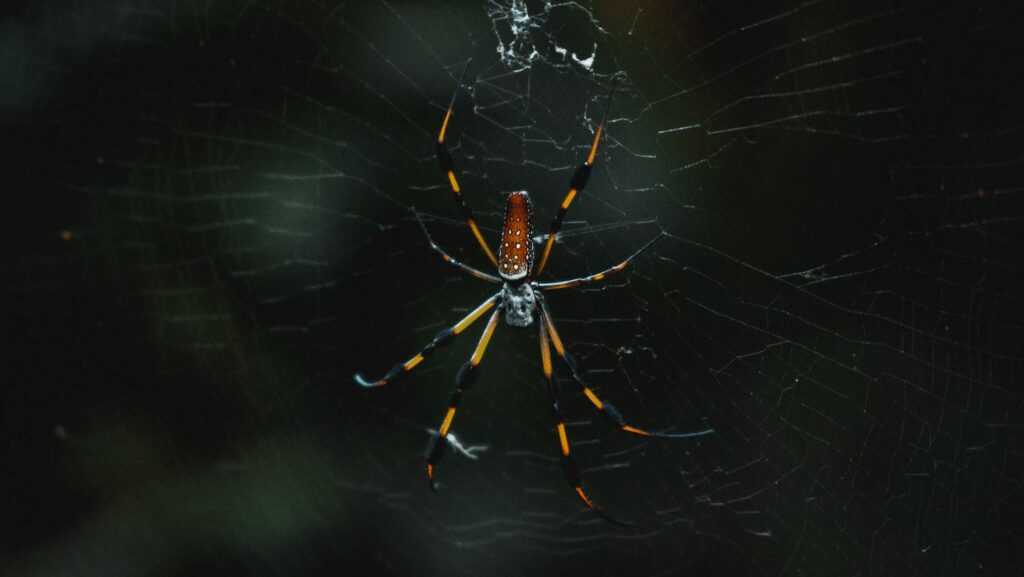
While most spiders are solitary, certain non-venomous species have evolved remarkable social behaviors that allow them to construct enormous communal webs that no individual could create alone. Species like Anelosimus eximius build sprawling silk structures that can span several meters and house hundreds or thousands of individuals working cooperatively. These mega-webs typically feature a dense central retreat area surrounded by extensive capture sheets that can envelop entire trees or shrubs in tropical environments. The social dynamics within these colonies are fascinating—individuals cooperate in web construction, prey capture, and even care of young, with multiple generations often inhabiting the same structure. Research suggests that this unusual social behavior may have evolved in environments where prey is abundant but unpredictable in size, as cooperative hunting allows these relatively small spiders to subdue much larger insects that would be impossible for individuals to capture. These communal structures represent one of the few examples of true sociality among arachnids and demonstrate how cooperation can create architectural possibilities beyond the capabilities of solitary species.
Diving Bell Webs: Underwater Air Pockets

The diving bell spider (Argyroneta aquatica) constructs perhaps the most unusual web of any non-venomous species—an underwater silk structure that functions as a personal submarine. Unlike all other spiders that build webs in air, this remarkable species lives almost entirely underwater, creating a silk dome anchored to aquatic plants. After constructing this framework, the spider repeatedly travels to the surface, capturing air bubbles within the hydrophobic hairs on its abdomen, then releases these bubbles beneath its silk canopy, gradually filling it with an air reservoir. This underwater “diving bell” serves multiple functions—providing oxygen for breathing, creating a dry space for consuming prey, offering protection from aquatic predators, and even serving as a nursery for eggs and spiderlings. The engineering principles are remarkable, as the spider must create a structure with precisely the right tension to contain air against water pressure while anchoring it securely to prevent it from floating to the surface. Research has shown that these structures are so efficient at trapping dissolved oxygen from the surrounding water that spiders can remain in their bells for extended periods without returning to the surface.
Purse Webs: Underground Hunting Tubes

The purse web spiders (family Atypidae) demonstrate how non-venomous species can use silk architecture to create effective hunting systems without traditional capture webs. These distinctive spiders construct tube-shaped silk structures that extend from underground burrows up along tree trunks or across ground surfaces, creating a sock-like structure that serves as both home and hunting device. The unique aspect of this design is its dual-nature—the portion below ground is an open tube where the spider resides, while the aboveground section is sealed and camouflaged with soil particles, plant debris, or lichen to blend perfectly with its surroundings. When an insect walks across the exposed portion of the tube, the spider detects the vibrations from inside, races to the spot, pierces the silk wall with its chelicerae, and pulls the prey through the tube wall into its lair. After consuming the meal, the spider repairs the hole in its tube, maintaining the integrity of its hunting system. These structures represent a fascinating evolutionary solution that allows hunting without exposure to predators, as the spider remains concealed within its silk fortress throughout the entire process.
Silk Egg Sacs: Architectural Protection for Offspring
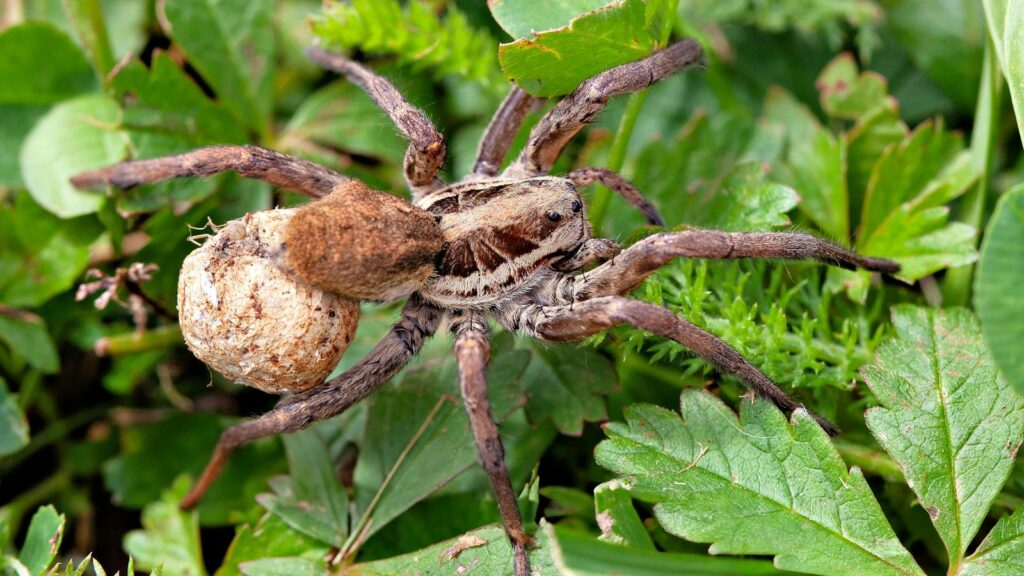
Beyond prey capture, non-venomous spiders create some of their most architecturally sophisticated structures for protecting their offspring. Spider egg sacs represent remarkable examples of functional design, with species developing highly specialized variations to address specific environmental challenges. The fishing spider (Dolomedes spp.), for instance, creates waterproof silk chambers that can float on water surfaces or attach to vegetation, incorporating air pockets that prevent drowning during floods. Wolf spiders (Lycosidae) construct spherical egg cases that they carry attached to their spinnerets, continuously rotating them to prevent mold growth and ensure even development of embryos. Perhaps most impressive are the egg sacs of certain orbweavers that incorporate sophisticated anti-predator features, including decoy structures that distract wasps, specialized outer layers that resist parasitoid penetration, and thermal regulation properties that maintain optimal developmental temperatures. These protective structures showcase how maternal investment in architecture can significantly increase offspring survival, with some species incorporating multiple silk types with different physical properties into a single protective structure.
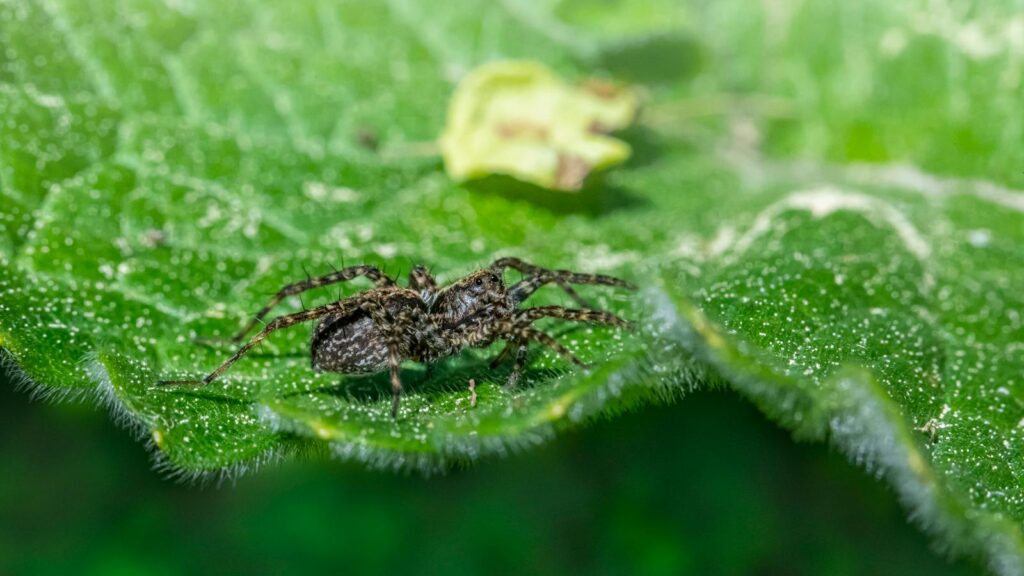
The remarkable diversity of web structures created by non-venomous spiders represents one of nature’s greatest exhibitions of evolutionary problem-solving and architectural innovation. From the geometric precision of orb webs to the underwater engineering of diving bells, these silk structures demonstrate how species can thrive through specialized adaptations rather than toxic weaponry. Each web type reflects millions of years of refinement to address specific ecological challenges, resulting in designs that human engineers continue to study for inspiration. As we better understand these architectural marvels, we gain not only appreciation for these often-misunderstood creatures but also insights that may inform future technologies in materials science, construction, and design. Non-venomous spiders remind us that in nature, ingenious architecture can be just as effective a survival strategy as potent venom.
